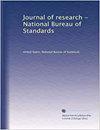Creep and structural stability of nickel-chromium-iron-alloys at 1,600 degrees F.
引用次数: 0
Abstract
A study was made of the creep characteristics at 1,600° F. (870° C.) of 15 alloys covering a range from 1 to 75 percent nickel and from 3 to 55 percent chromium. The results were compared with those of a previous investigation at 1,000° F. (538° C.) on similar alloys. In the investigation at 1,000° F. (538° C.) of the nickel-chromium-iron sys- tem, it was found that the alloys containing little or no iron, 50 to 80 percent nickel and 20 to 50 percent chromium exhibited the greatest resistance to creep. At 1,600° F. (870° C.), the strongest alloys are those containing approximately equal parts of nickel and chromium, and not more than 30 to 40 percent iron. As part of a metallographic study the attempt was made to distinguish between the effect on structure of elevated temperature alone and of elevated tem- perature and stress combined. A comparison was made between the structure in specimens used in the Greep test and that in the unstressed specimens of the same alloys annealed at 1,600° F. (870° C.) for periods ranging from 100 to 1,000 hours or quenched in iced brine from that temperature. In nearly all cases the quenched specimens were similar in structure to the annealed materials which indicates that these alloys were not readily heat treated. Carbide precipitation and agglomeration of the carbide at the grain boundaries were most pronounced in both the binary iron-chromium alloys and the ternary iron-chromium-nickel alloys of higher chromium content. Prolonged heating, of both stressed and unstressed specimens, did not produce any pronounced changes in the structure of the binary iron-chromium alloys or the ternary alloys except those containing 50 percent or more of nickel.镍铬铁合金在1600华氏度时的蠕变和结构稳定性。
研究了15种合金在1600°f(870°c)时的蠕变特性,这些合金的镍含量从1%到75%,铬含量从3%到55%不等。结果与先前在1000°f(538°c)下对类似合金的研究结果进行了比较。在1000°f(538°c)下对镍-铬-铁系进行的研究发现,含铁少或不含铁、镍含量为50% ~ 80%和铬含量为20% ~ 50%的合金表现出最大的抗蠕变性能。在1600华氏度(870摄氏度)时,最坚固的合金是那些镍和铬含量大致相等,铁含量不超过30%至40%的合金。作为金相学研究的一部分,试图区分高温单独对组织的影响和高温与应力联合对组织的影响。在Greep试验中使用的试样的结构与在1600°f(870°c)下退火100至1000小时或在该温度下在冰盐水中淬火的相同合金的无应力试样的结构进行了比较。在几乎所有的情况下,淬火试样在组织上与退火材料相似,这表明这些合金不容易热处理。在二元铁铬合金和高铬含量的三元铁铬镍合金中,碳化物的析出和晶界处碳化物的团聚最为明显。对应力和非应力试样进行长时间加热,除了含有50%或更多镍的合金外,二元铁铬合金或三元合金的结构没有任何明显变化。
本文章由计算机程序翻译,如有差异,请以英文原文为准。
求助全文
约1分钟内获得全文
求助全文

 求助内容:
求助内容: 应助结果提醒方式:
应助结果提醒方式:


